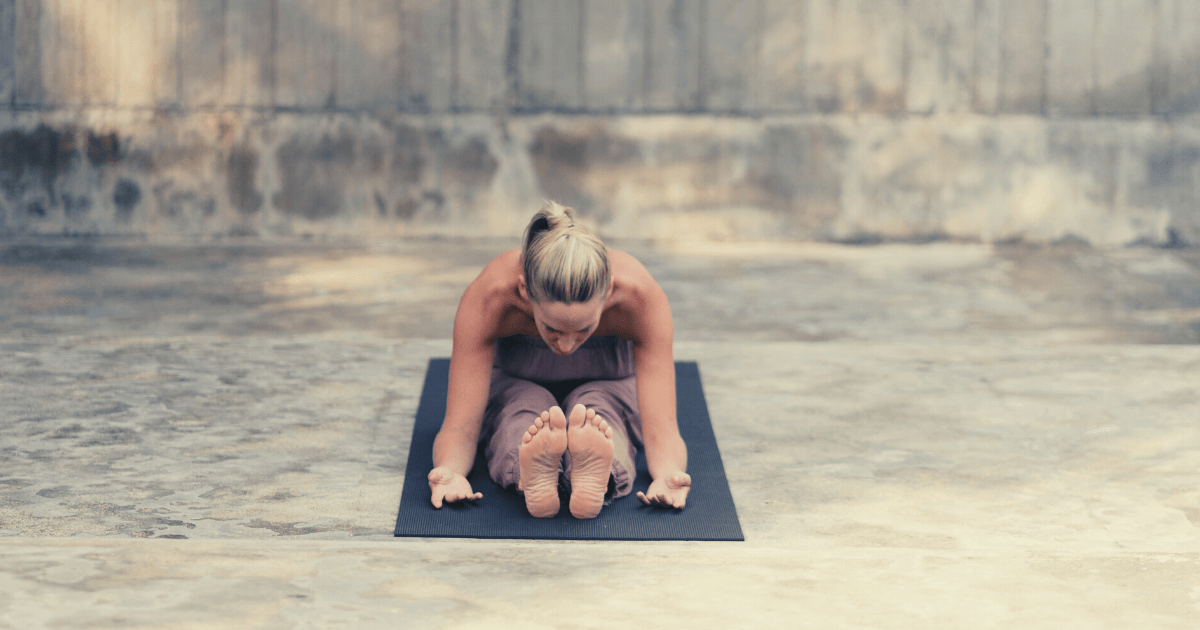Chinese medicine, which developed thousands of years ago, believes in the benefits of living in complete harmony with nature. This orientation helped them to stay healthy and happy throughout the year. My Yin Yoga classes are based on Chinese medicine (TCM).
Why is Yin Yoga important, especially in winter?
Yin Yoga allows you to slow down, relax and turn inwards, which helps to calm the nervous system and relieve stress. On a physical level, Yin Yoga improves flexibility, promotes blood circulation and releases tension. In Chinese medicine, winter is the most important yin aspect. Yin is the dark, cold, slow, inward energy. Contrast this with the yang of summer, whose energy is bright, hot, fast and expansive. I recommend practising Yin Yoga at least once a week – in summer and winter. But it is in the winter months that you can best explore the juicy yin benefits.
Why is forward bend my favorite yin pose in November?
In Chinese medicine, the water element is mainly influenced by the Kindey and Bladder meridians (energy lines). Some examples of emotional symptoms related to the water element:
- Kidney. Anxiety, panic, excessive drive, workaholism or lack of energy, willpower and motivation, feeling overwhelmed, paranoid behavior.
- Bladder: over-excited, highly sensitive, anxious, angry, nervous, exaggerated reactions, crying fits.
Watch for these physical signs of imbalance:
- Kidney: back pain, ringing in ears, difficulty getting up in the morning, poor bladder control/function.
- Bladder: muscle tension pulling up the spine, pain in the back of the legs, bladder pain, pain in the sacrum.
Forward Bend can offset many of the above physical and emotional symptoms, even though it focuses primarily on one aspect of the Water Element. That’s why it’s my first choice for November. If you can still find time for a second pose, add the seal pose.
How do I perform a Forward Bend correctly?
In Yin Yoga there are a few important rules/steps for me:
- Go into the pose and find a stretch at a comfort level of 1-10 between 5-8. 1-4 is not enough, you want to go to the edge…. a yummy stretch….9/10 is too much – you’re out of your comfort zone and can’t let go and go deeper.
- You want a stretch in a wider area and avoid pinching pain/sensations in a specific area that you can pinpoint with a finger.
- Pay attention to where you feel the stretch in your body (this becomes increasingly important if you want to integrate TCM into your yin pratice, which not every body wants to do).
- You move as little as possible. If you use props such as pillows, only move every 1-2 minutes…. (adjust your props and go deeper). Most important rule: Be still and quiet – that is what you are looking for: stillness and silence.
- Relax your body, relax your breath, relax your mind – enjoy (maybe with discomfort, but without pain!).
- Try to stay in the posture for 3-5 minutes or even longer (exceptions are exercises for the shoulders, never longer than 2 minutes please) with less tension. This is better than shorter and more intense. We learn yin (being), not yang (doing).
As a beginner, go into the Forward Bend. I recommend spreading the legs a little and maybe putting a cushion under the butt so that gravity kicks in and the torso can move naturally. The only thing working here is gravity and not you, you can relax.
You can put a pillow between you and your legs, especially if you feel tension in your shoulders. Feel the stretch or maybe even the energy flowing from your head to your legs or vice versa – don’t think too much. No active stretching, no winging (many men find this particularly difficult), stillness is the key. When you no longer feel a stretch in your legs or back…. (on a scale of 5 to 8)…. go deeper.
There are many (and this is where it gets really exciting) meditation exercises you can do during this process. For me, Yin Yoga is ‚meditation on the edge‘. For starters, I recommend just observing your breath, thoughts or emotions, without telling long stories in your head. And the best thing is to simply ask yourself during the process: ‚Who AM I?‘
